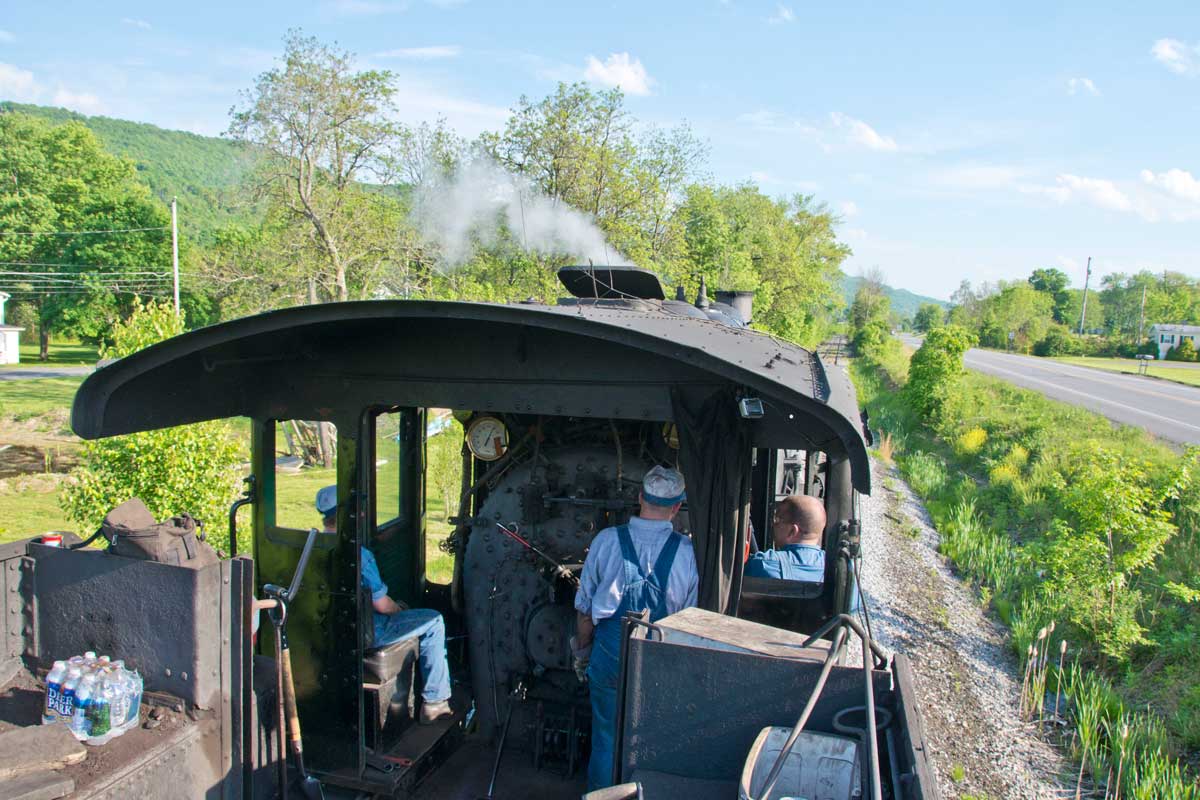Between the cylinder [3 in the diagram above] and the exhaust nozzle [5A], some of the energy left in the steam will be lost due to factors such as: passages being too small; turns being too sharp; sudden changes in passage size; passages walls being too rough; or excessive heat loss due to design / lack of insulation. In some very poorly designed locomotives, the exhaust passages can be joined in ways such that the exhaust pressure pulse from one side of the cylinder can be "seen" by the opposite cylinder which creates an artificially higher back pressure [as exhibited above near the number 4A].
Bernoulli's equation helps us understand the relationship of pressure and velocity in fluid flows. Without delving too deeply into the details, the equation tells us that a high speed flow equates to a lower pressure and a low speed flow leads to higher pressure. Taking a look at the locomotive exhaust nozzle [5A], the idea is to transfer the "pressure energy" of the steam into velocity to create a low pressure region just outside the nozzle which will suck the exhaust gasses from the firebox through the flues. For a given back pressure, a smaller nozzle opening (aka "cross-sectional area") will give a higher velocity flow and, thus, a strong draft on the fire. However, that back pressure may become high enough to start limiting the power that can be produced in the cylinders. This is exhibited in the relationship between the difference in pressure going in and going out of the cylinders.
Normally, to get more power, one would simply increase the cross-sectional area of the nozzle opening, lowering the back pressure at the same cylinder inlet pressure and cutoff. While this may increase power, it decreases the velocity of steam exiting the nozzle and, in turn, also decreases the draft acting on the fire and drawing hot gasses through the boiler. The result would be a poorly-drafting locomotive that would have difficulty making steam to meet the improved power from the cylinders.
Whereas the above describes a traditional single nozzle exhaust, a Lempor nozzle splits the total steam flow between four separate, smaller nozzles [5B]. Assume that the total cross-sectional opening for the four Lempor nozzles is the same as a single nozzle [5A]. Under the same inlet pressure and other conditions, the local speed of the steam jet exiting the smaller openings of the four nozzles will be a fair bit higher that that of the single, larger nozzle, simply because of the relationship between opening size and velocity. This creates a stronger draft with the same back pressure. The steam locomotive designer now has more options for finding an optimal balance between cylinder power and draft.
Steam locomotive mechanical engineer L.D. Porta also introduced a converging-diverging, or DeLaval, nozzle to steam locomotive design [5B]. In all other steam locomotive exhaust nozzles that we are aware of prior to his application, the exit walls were essentially parallel to the direction of steam flow. Under subsonic conditions, the converging or narrowing section works to speed up the flow. Once the flow reaches choked conditions, basically a velocity of Mach 1, no further acceleration can be obtained and thus no more improvement in draft. The diverging, or widening, portion of the nozzle under subsonic conditions actually serves to slow down the flow and increase the pressure. However, things flip-flop once the flow goes supersonic and by allowing the nozzle to widen to the outlet, the steam jet can continue to accelerate leading to draft improvement.
The multiple nozzles also help with mixing of the steam and flue gas as they lead to more surface area of steam at high velocity in contact with the flue gas. [Note that without good mixing of the two streams, the flue gas would mostly just stay in the smokebox instead of exiting the stack and its velocity through the flues and tubes would be much lower, resulting in poor heat transfer and thus poor steaming.] While mixing takes place as soon as the steam exits the nozzle, the first section of the petticoat [6B] is specifically thought of as a mixing chamber and its proportions in concert with those of the nozzles help assure good mixing/momentum transfer from the high velocity steam to the lower velocity flue gas.
Once mixed, the steam and flue gas is in the subsonic flow region but still has a fair bit of energy left and is still flowing at a fairly high velocity. If it was just allowed to go up a straight stack to the atmosphere [7A], that energy would be lost. Therefore, the latter part of the Lempor petticoat widens out [7B], which slows the flow and increases its pressure back to that of atmospheric. This characteristic, widening stack can be seen in the diagram of No. 29 below.





